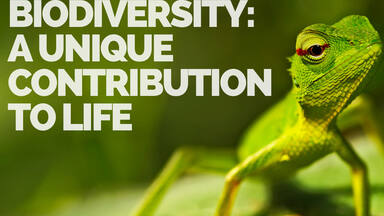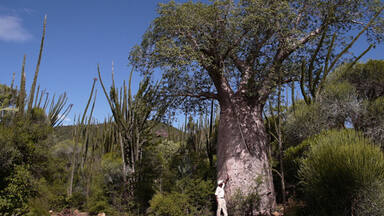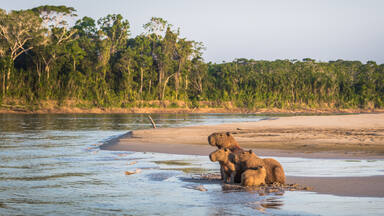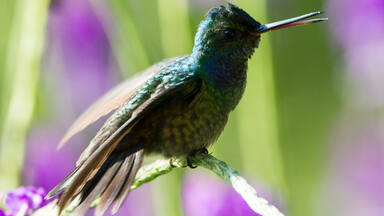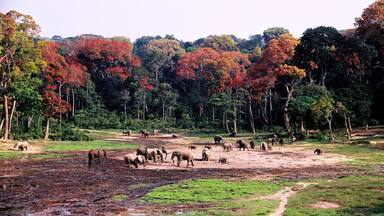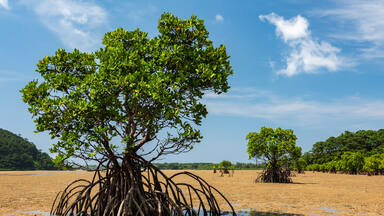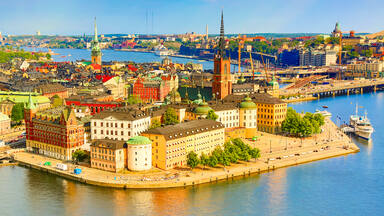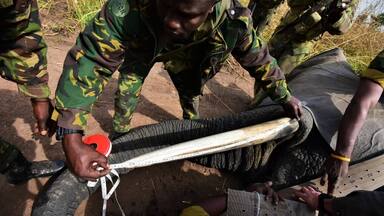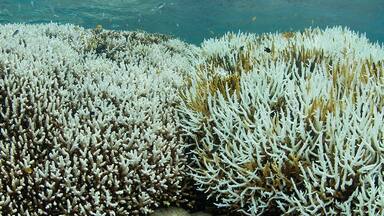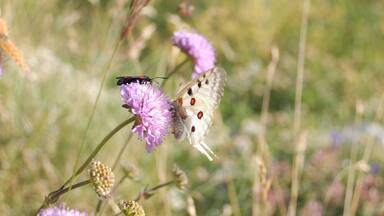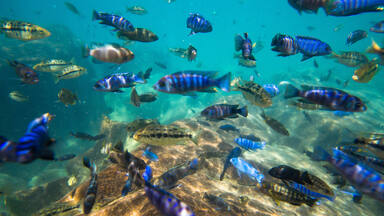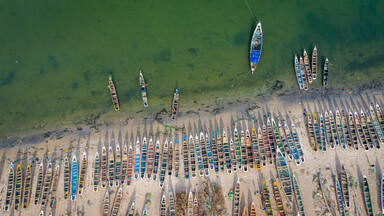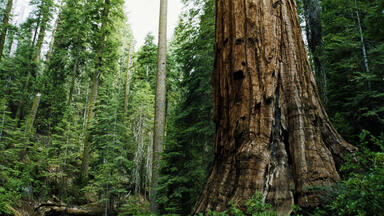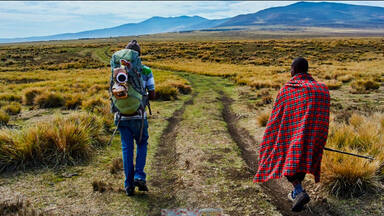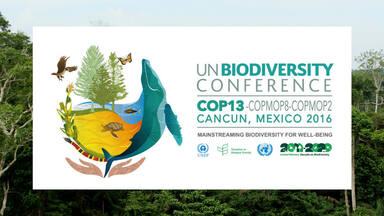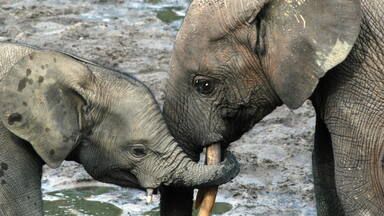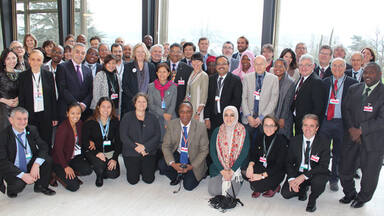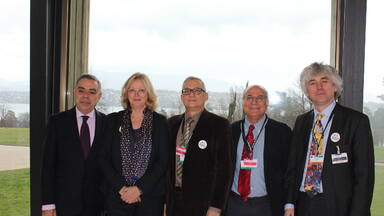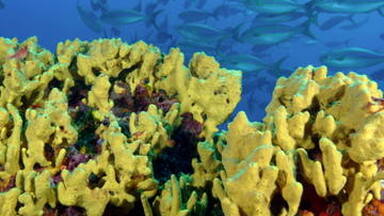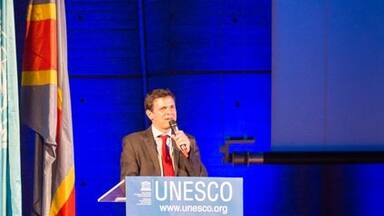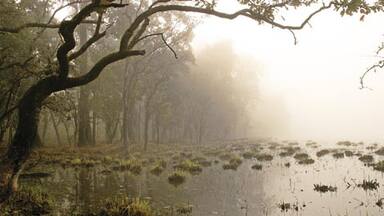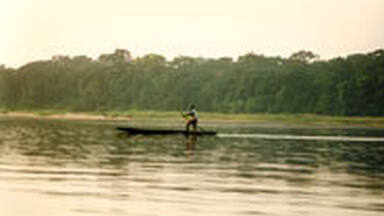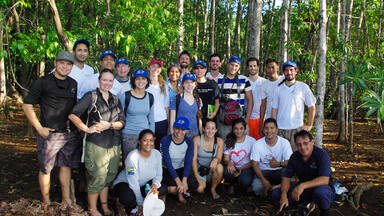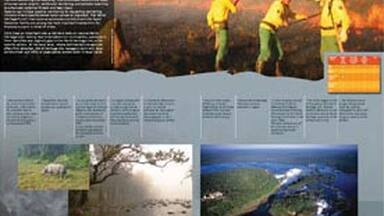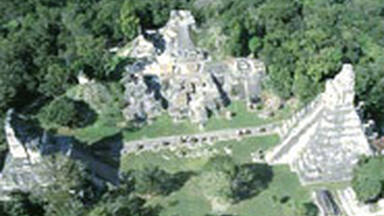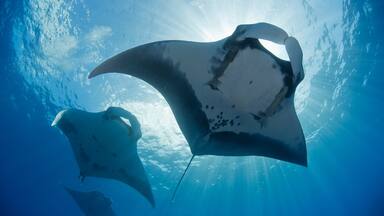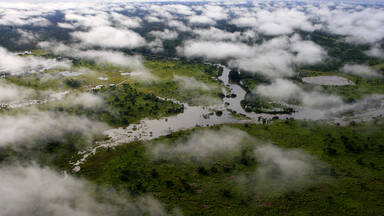Biological diversity underpins ecosystem functioning and the provision of ecosystem services essential for human well-being. World Heritage properties are some of the most outstanding places on the planet and constitute a significant subset of the protected area system, critical for conservation of ecosystem integrity and biodiversity. The World Heritage Convention ensures global commitment for the conservation of these exceptional places, while respecting their cultural and local connections.
The World Heritage Convention recognises some World Heritage properties specifically for their outstanding biodiversity values, protecting many of the most important ecosystems and areas of high biodiversity on the planet, as follows:
being “outstanding examples representing significant on-going ecological and biological processes in the evolution and development of terrestrial, fresh water, coastal and marine ecosystems and communities of plants and animals”
or containing “the most important and significant natural habitats for in-situ conservation of biological diversity, including those containing threatened species of outstanding universal value from the point of view of science or conservation”
World Heritage:
A unique contribution to biodiversity conservation
The first-ever inventory of species living in UNESCO World Heritage sites reveals that they alone harbour over 20% of mapped global species richness within just 1% of the Earth's surface. Safeguarding these sites is crucial to achieving global conservation targets.
Kunming-Montreal Global Biodiversity Framework
The conslusion of the 15th Conference of Parties to the UN Convention on Biological Diversity (CBD) in December 2022 saw the adoption of the Kunming-Montreal Global Biodiversity Framework (GBF). Amidst a decline in nature threatening the survival of 1 million species and impacting the lives of billions of people, the GBF aims to halt and reverse nature loss. The framework consists of global targets to be achieved by 2030 and beyond to safeguard and sustainably use biodiversity.
National Biodiversity Strategies and Action Plans (NBSAPs) are the principal policy instruments to operationalize the GBF. Integrating World Heritage in NBSAPs is crucial to catalyze action to enhance biodiversity conservation. Mindful of the World Heritage Convention’s importance in meeting the global biodiversity targets, the World Heritage Committee (Decisions 43 COM 5A, 44 COM 5A and 44 COM 7.2) has called on all States Parties to the Convention to actively engage in the preparation and implementation of the GBF, and invited States Parties and parties to the CBD to reflect the contribution of the World Heritage Convention to global biodiversity conservation, including through its integration within the NBSAPs. Suggested steps for integrating the biodiversity-related convention, including the World Heritage Convention, into the NBSAPs are provided in this UNEP publication. With support of the Netherlands Funds-in-Trust (NFiT), UNESCO World Heritage Centre has cooperated with its global partners in development of joint resources and guidance on synergies, including through NBSAPs, to enhance national-level cooperation and synergies across the biodiversity-related conventions.
UNESCO will also be contributing to the implementation of the GBF through the UNESCO Biodiversity Initiative aimed at increasing Member States’ awareness of biodiversity and ecosystem services, as well as crystallizing UNESCO’s work in education, science and culture for the holistic preservation of biodiversity and strengthening the biodiversity science-policy interface.
Culture
Although some sites are recognised specifically for their biodiversity values, there are significant opportunities for reinforcing biodiversity conservation and sustainable use of biodiversity in all World Heritage properties. Around 20% of UNESCO cultural World Heritage sites (>160 sites) are located in Key Biodiversity Areas (KBAs) and more than 120 sites are cultural landscapes which embody a long and intimate relationship between people, culture and their natural environment, often reflecting techniques of land-use that enhance biological diversity.
Areas of high cultural diversity are often areas of high biological diversity. The biocultural heritage has been promoted by UNESCO and the Secretariat of the Convention on Biological Diversity (SCBD) through their Joint Programme on Biological and Cultural Diversity since 2010.
Cooperation and Partnerships
The UNESCO World Heritage Centre cooperates closely with the biodiversity related Conventions (World Heritage Convention, Convention on Biological Diversity (CBD), Ramsar Convention, Convention on Migratory Species (CMS), Convention on International Trade in Endangered Species of Wild Fauna and Flora (CITES), International Treaty on Plant Genetic Resources for Food and Agriculture, International Plant Protection Convention (IPPC), International Whaling Commission (IWC)), individually and also through the mechanism of the Biodiversity Liaison Group (BLG). The BLG meets regularly to explore opportunities for synergistic activities and increased coordination, and to exchange information, and will play a key role in supporting the implementation of the Kunming-Montreal Global Biodiversity Framework.
The UNESCO World Heritage Centre has also maintained a close dialogue with the corporate sector to protect World Heritage sites from harmful industrial and large-scale activities. To date, more than 50 companies and industry associations have endorsed policies to safeguard World Heritage sites in various sectors, including in extractive industries, hydropower, finance and insurance sectors, commonly known as the World Heritage ‘no-go’ commitment.
Biodiversity conservation
The mission of the UNESCO World Heritage Centre is to pursue long-term conservation of the world’s natural and cultural heritage and sustainable development through the fullest and broadest application of the World Heritage Convention by all. Among the tasks of the UNESCO World Heritage Centre are the monitoring of the state of conservation of sites, technical assistance to States Parties, capacity-building of stakeholders involved in heritage conservation and the implementation of on-the-ground projects that enhance effective and equitable protection and management of World Heritage for the benefit of current and future generations.
The conservation, sustainable use and management of Central Africa biodiversity-rich forests have benefited from the activities of the Central Africa World Heritage Forest Initiative (CAWHFI) since 2002. This initiative aims at strengthening the management of UNESCO World Heritage sites in the Congo Basin while improving their integration within the region's various ecological landscapes. Further support has also been secured by the UNESCO World Heritage Centre for the protection of iconic threatened species such as elephants and giraffes in W-Arly-Pendjari Complex (Benin, Burkina Faso, Niger) and Garamba National Park (Democratic Republic of the Congo). Amongst other activities, the UNESCO World Heritage Centre supports community-based initiatives in Lake Malawi National Park (Malawi) contributing to the protection of the lake’s extraordinary fish biodiversity.
Significant efforts have also been made to protect biodiversity in emergency situations such as natural hazards and armed conflicts. The Rapid Response Facility (RRF), operated by the UNESCO World Heritage Centre and Fauna & Flora International, has provided timely resources to address threats and emergencies in more than 25 sites, contributing to the protection of over 300,000 km2. In Manovo-Gounda St. Floris National Park (Central African Republic), support from UNESCO has enabled the gradual recovery of wildlife following several years of civil unrest.
Engaging local communities is a key commitment under the World Heritage Convention to protect cultural and other human rights, empower local heritage custodians and secure broader and long-term support to World Heritage. In addition to supporting implementation of a dedicated policy on World Heritage and sustainable development, UNESCO launched with other UN partners the Community Management of Protected Areas for Conservation (COMPACT) initiative in 2000. Recently the programme has supported community projects in the Okavango Delta (Botswana) and the Maloti-Drakensberg Park (Lesotho/South Africa).
Marine World Heritage sites are leading marine conservation efforts in many countries. Launched in 2005, the mission of the World Heritage Marine Programme is to establish effective conservation of existing and potential marine areas of Outstanding Universal Value to make sure they will be maintained and thrive for generations to come. The programme has three focus areas to fulfil its mission: monitoring sites’ conservation status, connecting site managers, and build climate leadership across the network of marine sites. Some initiatives include research on marine biodiversity through environmental DNA (eDNA), building resilience at World Heritage-listed coral reefs through the Resilient Reefs Initiative, and addressing climate science gaps.
Nearly two-thirds of the ocean lies beyond the jurisdiction of nations, commonly called the High Seas. Marine areas beyond national jurisdiction (ABNJ) cover half of our planet and contain natural wonders. Cognizant of the growing threats to biodiversity in ABNJ, States at the United Nations are negotiating a treaty to ensure the conservation and sustainable use of this vast global commons, and the World Heritage Marine Programme has been exploring technical modalities for World Heritage in High Seas.
Literature
- World Heritage: a unique contribution to biodiversity conservation (UNESCO and IUCN, 2023)
- Guidelines for conserving connectivity through ecological networks and corridors (IUCN, 2020)
- Enhancing Cooperation among the seven biodiversity related agreements and conventions at national level using the National Biodiversity Strategies and Action Plans (UNEP, 2016)
- Sourcebook of Opportunities for Enhancing Cooperation among the Biodiversity Related Conventions at National and Regional Levels (UNEP, 2015)
- Mapping Multilateral Environmental Agreements to the Aichi Biodiversity Targets (UNEP-WCMC, 2015)
- Tracking Key Trends in Biodiversity Science and Policy (UNESCO, 2013)
- Terrestrial biodiversity and the World Heritage List: identifying broad gaps and potential candidate sites for inclusion in the natural World Heritage network (IUCN, 2013)
- Marine natural heritage and the World Heritage List: interpretation of World Heritage criteria in marine systems, analysis of biogeographic representation of sites, and a roadmap for addressing gaps (IUCN, 2013)
- World Heritage Review n°70 Synergies to Protect Sites
- World Heritage Review n°56 Biodiversity
- Links between biological and cultural diversity (UNESCO, 2007)
See Also
Natural World Heritage
Synergies to protect World Heritage
World Heritage Marine Programme
Biodiversity Conservation in Regions of Armed Conflict
Cultural Landscapes
Rapid Response Facility
UNESCO-SCBD Joint Programme on Biological and Cultural Diversity
UNESCO Biodiversity Initiative
Man and the Biosphere programme
Education for Sustainable Development - Biodiversity


